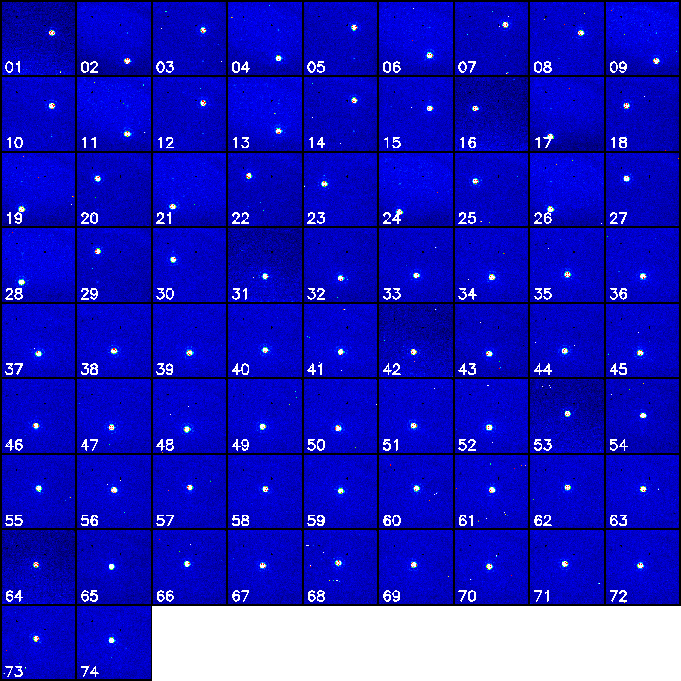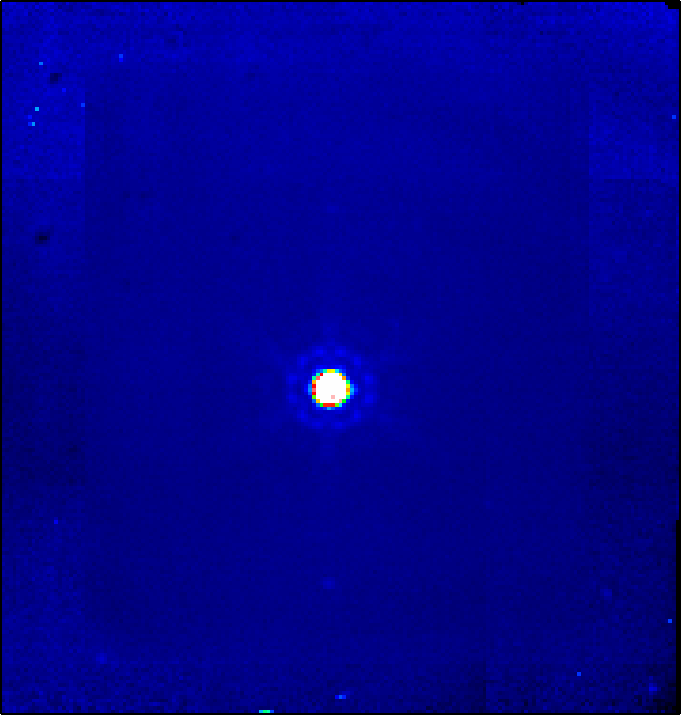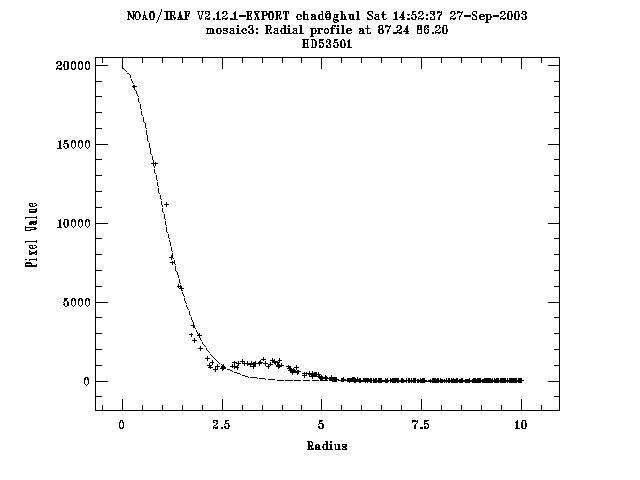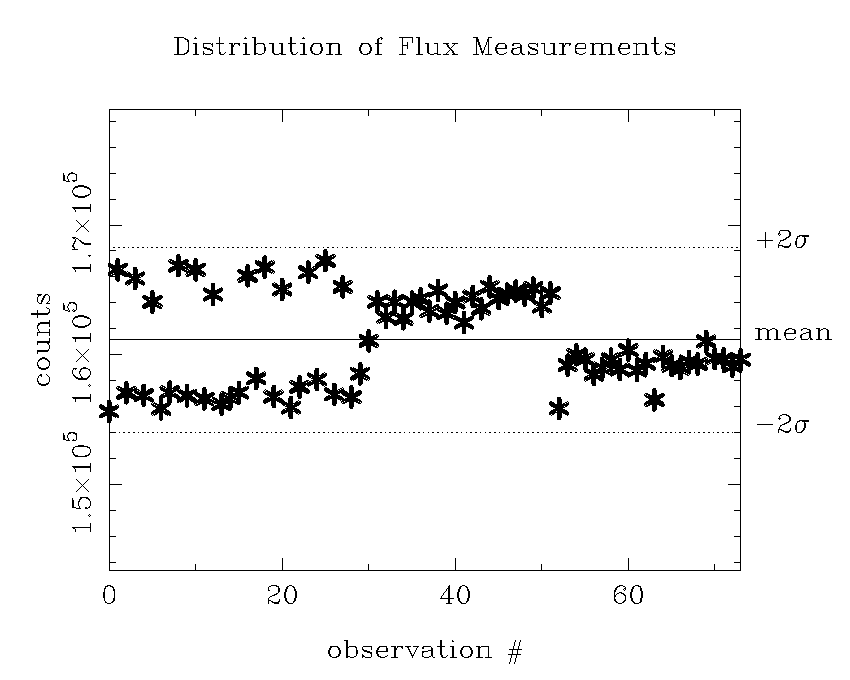
Figure 1: DAT-processed first light data at 24µm.
Principal:
Deputy:
Analyst:
AORKEYS:
Last Updated:
The data were processed with version 2.10 of the DAT, using the preflight dark image and a flat image (kindly generated by J. Muzerolle) made using the flat-field data taken in this campaign. A centroid measurement and aperture photometry was performed on the star in each of 74 DCEs. These data were used to assess the throughput and CSMM operation. The data were coadded to make a mosaic, which was used to assess the image quality and was examined for background sources or other problems which would bias the focus measurement. No distortion correction was performed on the data, because the header format does not match the format expected by mips_enhancer.
As expected, this task generated a total of 74 Si:As DCEs. The DAT-processed images are shown in Figure 1. The target star is visible and unsaturated in every DCE. Visual inspection indicates that the CSMM dither pattern is as expected. The spacecraft motions are not what I expected. I expected the star to start on the left side of each dither pattern and then move to the right, while instead it started on the right and then moved left. Based on my simulations in the MIPS-100 cookbook, I also expected the large-field AOR to start at the top of the pattern and move downwards. Careful examination of the SPOT visualization shows that this expectation was wrong - the source should have started closer to the bottom and then moved upwards, which is what it did. Thus, the left-right motions appear backwards on the array, while the up-down motions appear correct.

Figure 1: DAT-processed first light data
at 24µm.
An offset list for the series of DCEs was generated by centroiding on the star in each image, using IRAF's imexam task. This centroid list was used to generate an offset list for IRAF's imcombine task, which was used to create the mosaic in Figure 2. The offset list was required because the WCS parameters do not accurately reflect the pointing. A mosaic generated using offsets derived from the WCS parameters is shown in Figure 3. The left-right offsets are roughly correct, since the images line up in a line in that direction. The up-down offsets are not correct, since the images are spread out in that direction. In fact, K. Gordon has shown that flipping the images in the y direction will result in the WCS parameters producing the correct offsets.

Figure 2: Mosaic of 74 first-light DCEs,
displayed in a log scale.

Figure 3: Mosaic of 74 first-light DCEs,
using the WCS parameters to generate the offsets.
As shown in Figure 2, the image strongly resembles the modeled PSF (cf. MIPS-100 Cookbook). The radial profile, shown in Figure 4, also indicates the image width (2.13 pixels FWHM) is roughly as expected.

Figure 4: Radial profile of first-light
star.
I computed the total counts from the star in all 74 DCEs, using an aperture 6 pixels in radius. The counts are 1.611e+05 +/- 3.559e+03 (2.2%), and the distribution is shown in Figure 5. I computed an aperture correction for an aperture this size of 1.15, using a model PSF from Tiny Tim. The flux for the target star (HD053501) is 1.23 Jy at 24µm, so the ratio of DN/s to Jy is 1.611e5 * 1.15 / 1.23 = 1.5e5.

Figure 5: Counts from first-light star as a
function of DCE number.
There are 3 independent spacecraft offsets in this observation. The offset between DCEs 15 and 16 should have been 129", and was instead -129" (i.e., the right amplitude but in the wrong direction). The offset between DCEs 41 and 42 should have been 11.5", and was observed to be approximately -11.6". The offset between DCEs 52 and 53 was expected to be 60", and was observed to be 60".
The CSMM moved as expected, and the predicted positions (from the CSM_PRED) keyword match the values expected from the parameters of the observation.
The difference frame has performed as expected upon first inspection. The target star for this task was close to saturation in the center and so those pixels were replaced with pixels from the difference frame. The resulting PSF (shown in Figure 4) is normal and shows no discontinuities due to the replacement.
The data were made available to the team members working on the focus check and the frame table update. There are reduced DCEs and a mosaic available for the team, but I'm not sure yet where to put them to make them available.
We need to resolve the PCS operation and WCS anomalies described above.